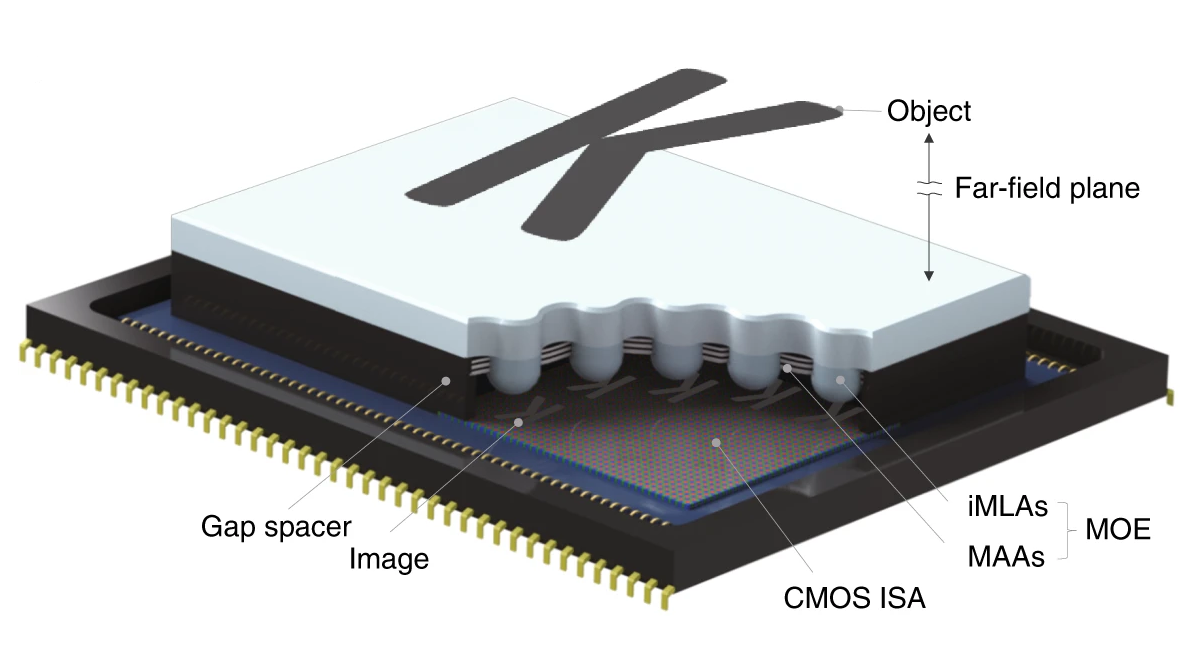
Bio-inspired arrayed camera is only 740μm thick

In a paper titled “Biologically inspired ultrathin arrayed camera for high-contrast and high-resolution imaging” published in Nature’s Light Science & Applications journal, the researchers achieve high-contrast and super-resolution imaging thanks to a novel arrayed design of micro-optical elements (MOEs) comprising multilayered aperture arrays (MAAs) and inverted microlens arrays (iMLAs) directly stacked over an image sensor. The MOEs were fabricated using simple sequential photolithography and thermal reflow steps on a glass substrate, which was then flipped over and integrated on a CMOS image sensor with gap spacers.
This camera stack was directly inspired from the eye structures of paper wasp specie Xenos peckii, featuring hundreds of photoreceptors behind each individual eyelet. Such a structural arrangement is reported to offer higher visual acuity than other compound eyes found in nature.

As the authors report in the paper, with a total track length of 740μm including the top glass window, the fully packaged camera boasted a field-of-view (FOV) of 73° and enabled high-contrast imaging by eliminating the optical crosstalk between neighbouring microlenses.

showing inverted microlens arrays (iMLAs) in place of facet
lenses, multilayered aperture arrays (MAAs) in place of
pigmented cups, gap spacers, and CMOS image sensor arrays
(CMOS ISA) in place of the photoreceptors.
The MAAs, stacking UV patterned black polymer circular patterns, serve as cylindrical pinhole arrays, which provide efficient light absorption over the whole visible spectrum and thus substantially reduce the optical crosstalk between microlenses, the paper reads.
What’s more, with their novel optical stack configuration, the researchers are able to precisely control image overlap between neighbouring channels, simply adjusting the period of the microlenses. This overlap makes the images arrayed from multiple channels uniform but all slightly different, from which a single high-resolution image can be reconstructed using a dedicated multi-frame super-resolution algorithm.
This ultrathin arrayed camera could readily find practical use in mobile devices, advanced surveillance vehicles and endoscopes, the authors conclude.
KAIST – www.kaist.ac.kr
Related articles:
1.4mm thin bio-inspired camera boasts 68º field-of-view
Bio-inspired lens gives image sensors night vision capability
Origami technique turns flat optical sensors into hemispherical eyes
Cheap polarization imaging sensor mimics mantis shrimp’s eyes
Thin film micro-lenses stretch to focus
 If you enjoyed this article, you will like the following ones: don't miss them by subscribing to :
eeNews on Google News
If you enjoyed this article, you will like the following ones: don't miss them by subscribing to :
eeNews on Google News




